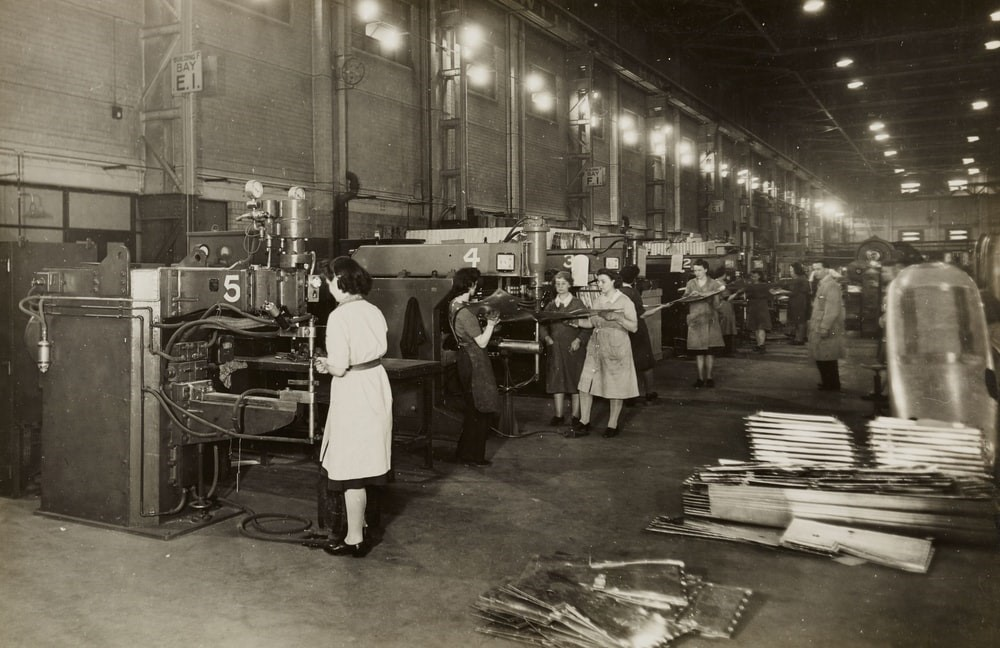- Management has been practiced for thousands of years.
- Around 400 BC, Socrates asserted that management was a different ability from technical abilities and knowledge.
- The Romans, famed for their legions of troops commanded by Centurions, ensured responsibility through a hierarchically-ordained structure.
Management has been practiced for thousands of years. According to * (1995), basic approaches to management date back at least 3000 years before the birth of Christ, when Middle Eastern clerics began keeping records of economic activities. Around 400 BC, Socrates asserted that management was a different ability from technical abilities and knowledge. The Romans, famed for their legions of troops commanded by Centurions, ensured responsibility through a hierarchical structure.
- During the Middle Ages, guilds produced handcrafted items ranging from bread to armor and swords for the Crusades.
- A control and power structure existed, similar to that of the Catholic Church, with authority resting with the masters and trickling down to journeymen and apprentices.
The Roman Catholic Church was divided into areas, had a system of command, and job descriptions. During the Middle Ages, roughly from 476 AD to 1450 AD, guilds, a collective of artists and merchants, produced handcrafted items ranging from bread to armor and swords for the Crusades. A control and power structure existed, similar to that of the Catholic Church, with authority resting with the masters and trickling down to the journeymen and apprentices. These artisans were, in essence, tiny enterprises that produced items of uneven quality, low rates of production, and no need for administrative oversight beyond that of the owner or master craftsman.
- The Industrial Revolution was a period of enormous change in the way people lived and worked.
- Numerous innovations were made, including the invention of the steam engine and the mass production of goods previously made hand-by-hand.
The Industrial Revolution, which lasted from the late 1700s to the early 1800s, was a time of enormous upheaval and massive change in the way people lived and worked. Prior to this period, most people made their livelihood by farming or laboring in rural villages. Numerous innovations occurred with the invention of the steam engine, including the automated movement of coal from underground mines, powering factories that now mass-produced goods previously made by hand, and railroad locomotives that could move products and materials across nations in a timely and efficient manner.
- Ford’s Henry Ford invented the moving assembly line to manufacture his vehicles.
- Skilled artisans were no longer required to make autos from a managerial viewpoint.
- The employment of lower-cost labor and the enhanced output produced by shifting manufacturing lines are referred to as managership.
Factories need labor, who required guidance and order. As these facilities grew in size and productivity, the requirement for management and coordination became critical. Consider Henry Ford, the guy who invented the moving assembly line to manufacture his vehicles. Craftsmen assembled vehicles in the early 1900s, modifying components to match their product. With the introduction of standardized parts in 1908, followed by Ford’s breakthrough assembly line in 1913, the time necessary to produce a Model T was reduced from days to a few hours (Klaess, 2020). Skilled artisans were no longer required to make autos from a managerial viewpoint. The employment of lower-cost labor and the enhanced output produced by shifting manufacturing lines are referred to as
The employment of lower-cost labor and improved output from moving manufacturing lines necessitated the need to direct and manage these large operations (Wilson, 2015). To capitalize on new technology, a new organizational structure and management strategy were necessary.
As new technology emerged, so did the need for enhanced productivity and efficiency. The need to comprehend how to effectively conduct business revolved on the concept of work processes. Managers sought to investigate how work was done and how it affected productivity. The goal was to improve how the task was done. Frederick Taylor was a key figure in the development of quantifying human performance. Taylor believed that the major goals of management were to increase efficiency and reduce expenses.

Taylor’s theories were built on a formula that computed the number of units created in a given time period. Taylor performed time experiments to assess how many units a worker could create in a given amount of time. He calculated how far items travelled and how many steps workers took to do their jobs using a timer, weight measuring scale, and tape measure. Other management theorists, such as Frank and Lilian Gilbreth, Harrington Emerson, and others, developed on Taylor’s idea of management reasoning with the purpose of efficiency and consistency, all in the name of optimizing output. The objective was the most efficient utilization of labor to enhance productivity, regardless of whether the organization built autos, dug coal, or made steel.
The need to manage not just worker production but also to connect the entire business toward a single goal began to develop. Management was forced to arrange various complicated procedures for progressively massive enterprises out of necessity. Frenchman Henri Fayol is credited with creating the management ideas of planning, organizing, coordinating, command, and control, which were forerunners of today’s four essential management principles of planning, organizing, leading, and managing.